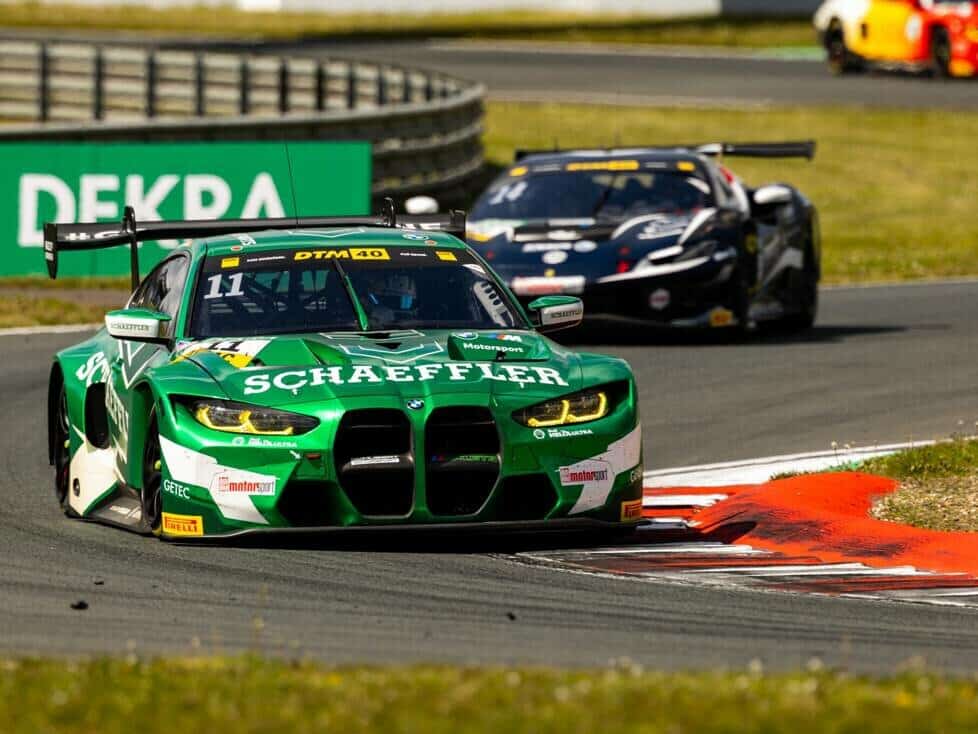The new full-course yellow rule caused a stir at the DTM season opener in Oschersleben: Why it was introduced and why there is now criticism
The rule introduced this year that compulsory stops are no longer possible under full-course yellow (FCY) or in a safety car phase was actually intended to make the DTM fairer. But at the DTM opener in Oschersleben, there was turmoil in both races because a few drivers found their way into the pits a few seconds before the announced FCY phase and the closing of the pit lane, putting them well ahead of the rest of the field
This was particularly blatant on Saturday for Schubert BMW driver Marco Wittmann, who was only 17th before the stops but then led the field by 35 seconds before running out of fuel later on. “You can’t leave the regulations as they are, because no spectator understands that.”
“When I sit in front of the TV, I wonder why a thrilling battle at the front suddenly turns into a lead for a driver who actually had nothing to do with it due to full-course yellow,” criticized Fritz. “We’ve had the same problem twice now. That should not happen. It’s not good for the sport. ”
Lausitzring 2023 as the trigger for a change in regulations
Sunday’s winner Luca Engster was in a strong third place before the perfect pit stop timing, but the Grassser-Lamborghini driver and Maro Engel, who also benefited in the Winward-Mercedes, then drove their own race at the front, while the supposed contenders for victory followed with a respectful gap of 20 seconds
The worst hit was HRT-Mercedes driver Luca Stolz, who would probably have won without FCY. It is therefore no wonder that team boss Fritz is not happy with the regulation. However, he does not want his criticism to be understood as interest-driven: “I’m not saying this because of us or because I’m grumpy now.”
But how did the change in regulations come about in the winter? Last year, the ADAC decided to close the pit lane at FCY due to the conditions at the Lausitzring, because the last corner could be shortened there and overtaking could be done via the pit lane. Even with the speed limit of 50 km/h, you would have been faster through the pits than at 80 km/h at FCY.
“Out of this necessity, we then said: ‘Why don’t we do this at all events?” explained series manager Michael Rebhan before the 2024 season. The aim was to prevent teams from going for it and speculating on an FCY phase in order to gain time at the stop.
Why there is no need to fear regular FCY poker
A goal that, according to Martin Tomczyk, has been achieved: Because between calling out the FCY countdown, which is designed to prevent rear-end collisions, and closing the pit lane, there are only ten seconds to make it to the pit lane in time. “Hoping that I will be exactly at the pit lane entrance during the ten-second countdown is far too vague and too risky,”
However, he is of the opinion that the effects of the regulation change were underestimated. “I don’t think it works the way it was intended,” says Tomczyk.
“Especially on short tracks, the problem is that the race director can never time it so that everyone has passed the pit lane exit. It’s even more difficult if he can’t wait until he starts the countdown because a car is on fire or something. If you’re in the right position, you can make your mandatory pit stop – and everyone else can’t. ”
“Now there’s no race at all”: Was old solution better?
This is exactly what bothers HRT team boss Fritz, because while numerous drivers benefited from an FCY phase last year, in Oschersleben it was one or two drivers who hit the jackpot and had a huge advantage.
“I thought last year’s solution was even better,” said Fritz. “At least that made for an exciting race, because 50 percent were already in the pits and 50 percent weren’t yet. And at least there was still a race after the safety car. But now there is no race at all! One or two are happy – if things go well, there might be three – and the rest are just victims,” says the HRT team boss, who speaks of a “game of chance”.
Tomczyk is also critical of the current situation. “Luck is part of it! And a bit of variability is needed in motorsport, but it must not degenerate into sporting unfairness,” he warns. “If someone is at the back of the field all weekend and leads the field by 40 seconds by chance, then that doesn’t suit the DTM. “





